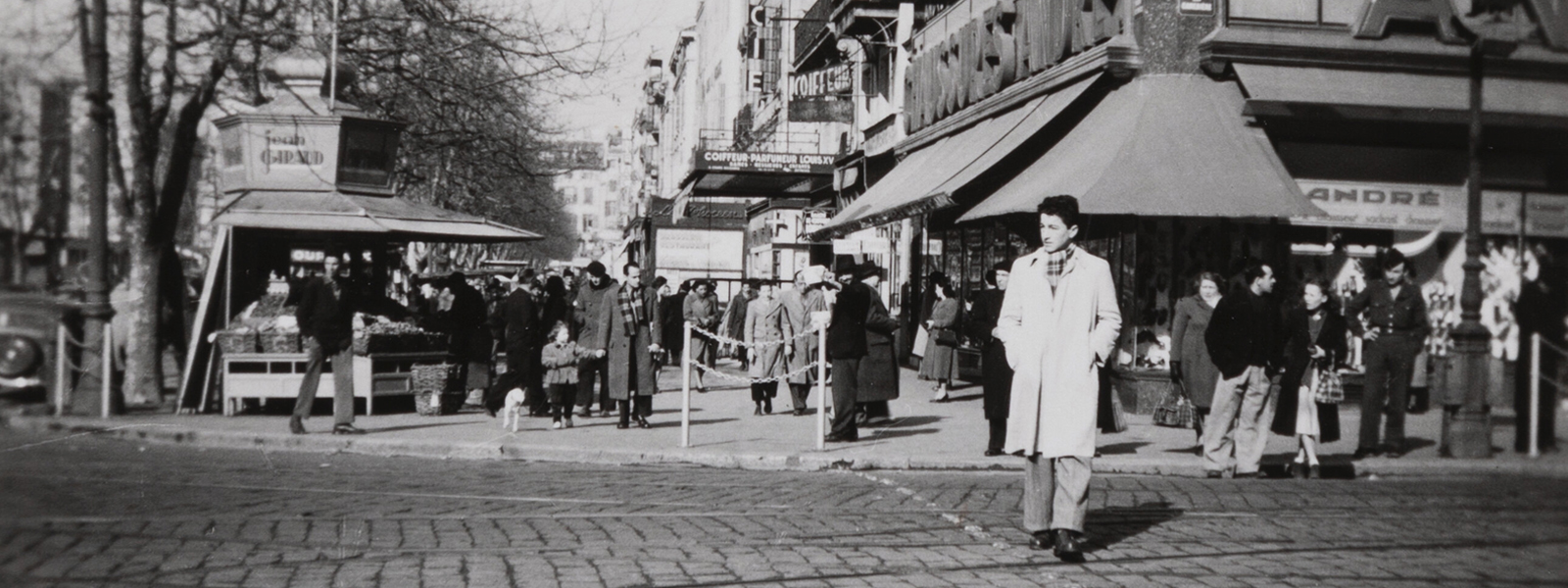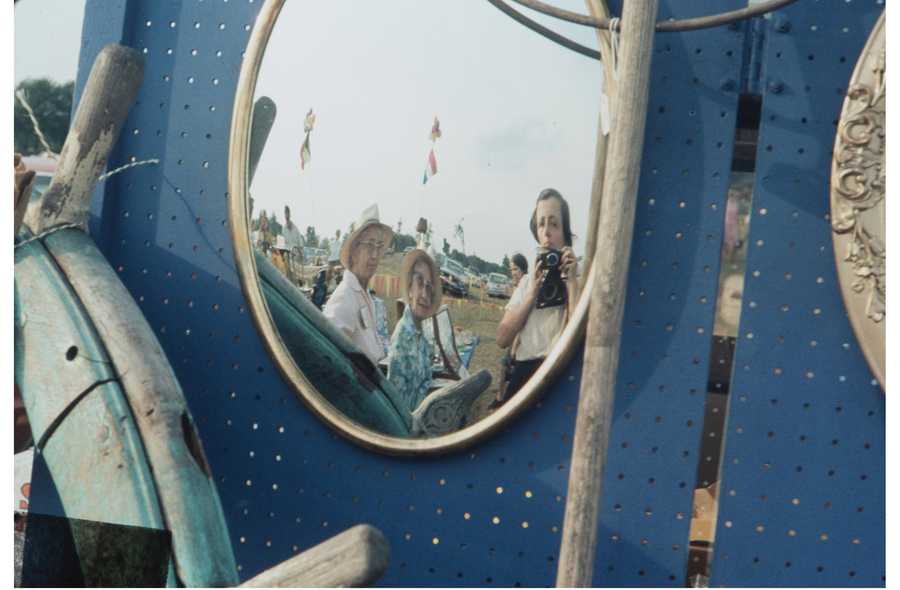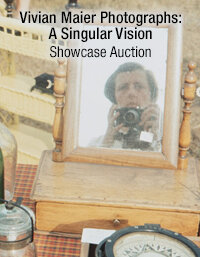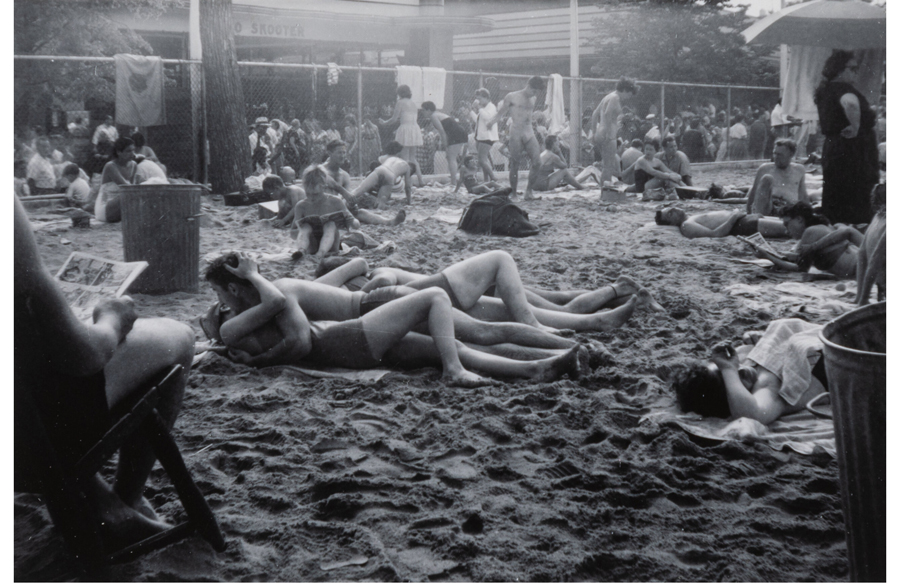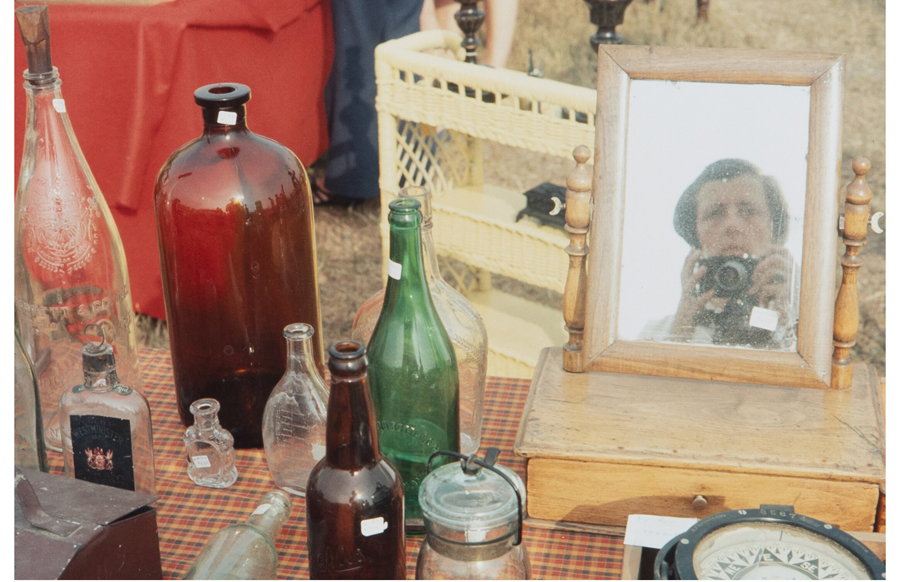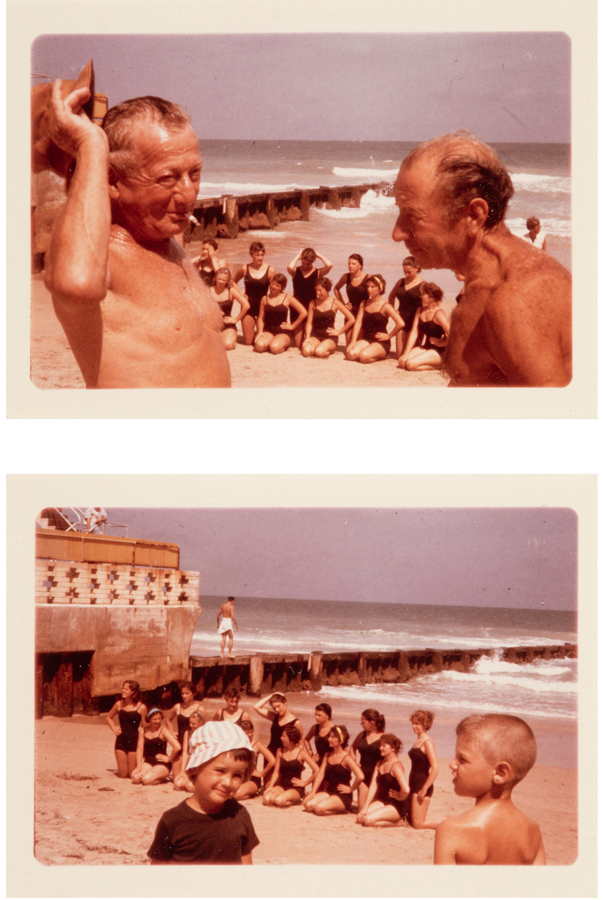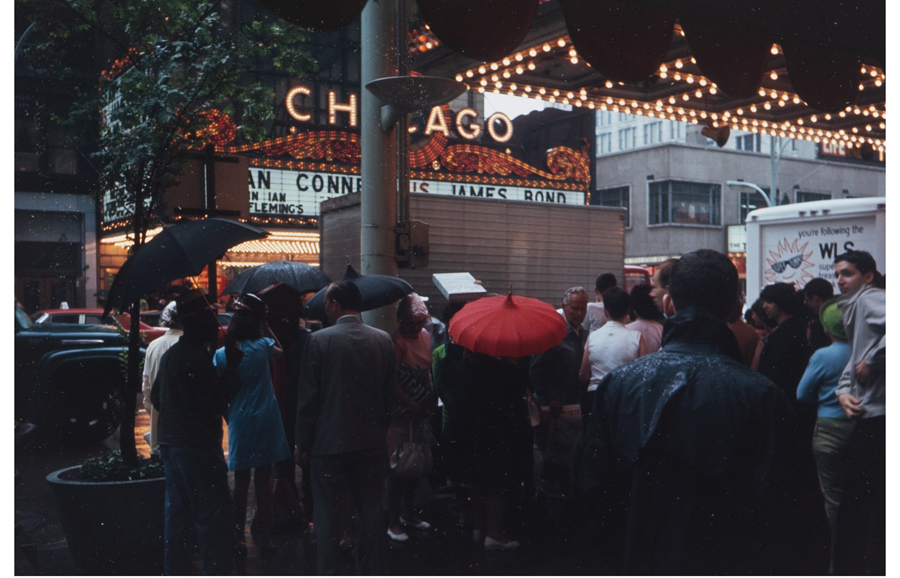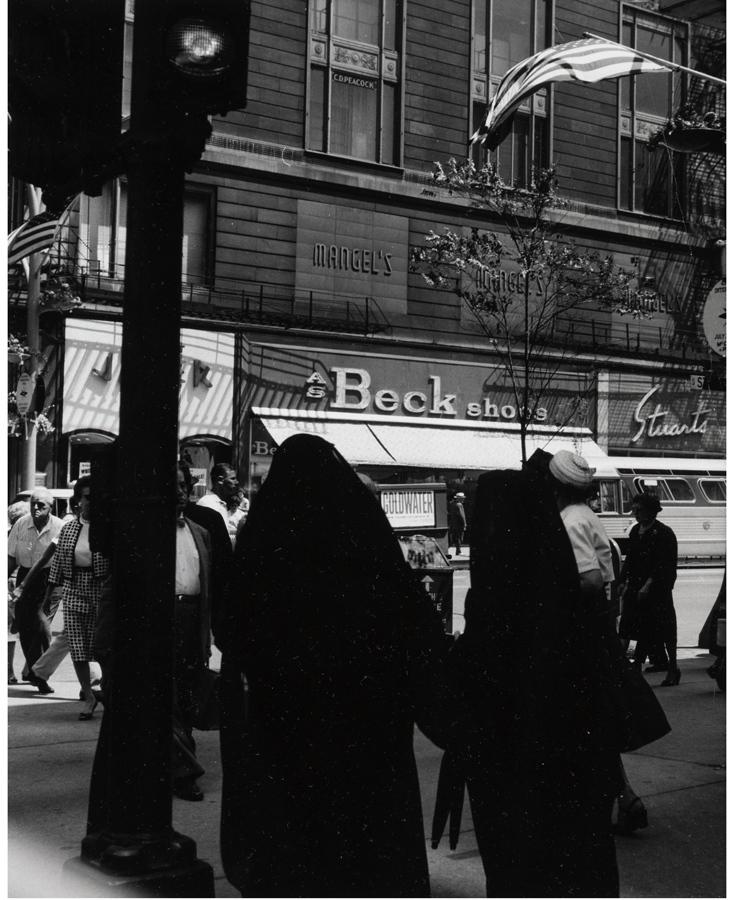FIRST-OF-ITS-KIND AUCTION BRINGS TO LIGHT RARE VINTAGE PRINTS, CREATIVE SELF-PORTRAITS AND EXAMPLES OF THE LEGENDARY STREET PHOTOGRAPHER’S EARLIEST CAMERA WORK
By Christina Rees
There are many ways to get the wrong picture about Vivian Maier … To get the right picture, look at her squarely, as she would look at you: on her own terms, from her own evidence of who she was and what she did.”
–Pamela Bannos, from her book Vivian Maier: A Photographer’s Life and Afterlife
Very few artists whose work is discovered after their death manage to break through the consciousness of the art world, let alone popular culture at large. Vivian Maier is one such rarity; her photographs caught the world’s attention by 2013, four years after her death and six years after storage locker sales in Chicago unearthed thousands of her photos and negatives. The photographs are so instantly compelling and authoritative that the canon of great street photographers who captured on film the 20th century in all its complexities – among them Henri Cartier-Bresson, Garry Winogrand and Elliott Erwitt – found itself with a mysterious and fascinating new member, one who had worked as an itinerant nanny and who took photographs far and wide for more than four decades. Maier, who never sought publicity, has since been consistently named as one of the most popular photographers of the last century and one of the most recognized names in the art world.
‘Self Portrait with Others,’ 1969, 35 mm color transparency
Her work, and Maier herself, has been the subject of international museum exhibitions, documentaries, think pieces and books. While it’s estimated that Maier took upwards of 100,000 photos, the vast majority of her work surfaced as negatives; Maier rarely printed her work or had it printed by others.
May 2, 2024
Online: HA.com/17198
INQUIRIES
Sarahjane Blum
214.409.1549
SarahjaneB@HA.com
On May 2, Heritage Auctions will be the first to present a selection of Maier’s photographs that she printed herself or had printed in her lifetime, almost none of which has been made available until now. Vivian Maier Photographs: A Singular Vision is a historic auction for collectors and followers of her fascinating trajectory. In advance of the event, Intelligent Collector checked in with artist, researcher and author Pamela Bannos, whose critically acclaimed book Vivian Maier: A Photographer’s Life and Afterlife traces Maier’s private, eccentric life and evolution as an artist. Below, Bannos discusses Maier’s work and the significance of Heritage’s auction.
‘Palisades Amusement Park Wave Pool,’ 1952, gelatin silver print on Kodak Velox paper, 2-1/4 x 3-3/8 inches (5.7 x 8.6 cm) (image), 3-1/4 x 4-1/4 inches (sheet)
On May 2, Heritage will offer a rare selection of photographs by Maier, including enlarged prints created in her lifetime. What makes this group of images so meaningful?
The bulk of this offering represents Maier’s earliest known work and also, I’d argue, her least-known work. Beyond that, this early work foreshadows the following decades of her incredibly prolific photography practice. And in the case of the enlarged prints, they show her choices and give us a slightly different idea of what she was interested in capturing, perhaps only for herself. This matters because until now collectors have come to know Maier’s works through the editors of her posthumous prints and publications.
Regarding the earliest work, Maier’s photography emerges in 1950 during a yearlong trip to France and her travels through Europe. There are many landscapes, and they’re interspersed with images of a range of subjects, including proto-photojournalist-looking work. Maier continued shooting in the rectangular 6-by-9-centimeter format until the summer of 1952, when she started with what became her signature square Rolleiflex work. All of that is evident in this collection.
‘Self Portrait with Still Life,’ 1969, 35 mm color transparency
You know these photos well – several of them appear as the central plates in your book. Tell us about your connection to them and your early interest in Maier?
I got involved with Maier’s story in 2012 when I was asked to respond to the critique that her New York street photography was derivative of the photographers with whom she’d been compared. Chicago’s public television station was airing a program that included the three major collectors of her photography, including Ron Slattery, and I gave my opinion that there was much more to Maier and her work than we understood at that point. Over the next few years, I studied her materials to learn who she was as a photographer. This collection was helpful in elucidating her development, and some of these pictures ended up being available for publication in my 2017 book.
‘Cocoon,’ circa 1950s, gelatin silver print, 13-1/2 x 10-5/8 inches (34.3 x 27.0 cm) (image), 14 x 11 inches (sheet)
Are there particular themes in this work that Maier collectors or photography enthusiasts can look for?
There’s a broad representation here, which is actually pretty accurate to her entire oeuvre. We can see, particularly early on, that she was interested in portraiture – of strangers and otherwise – as tightly framed people represent the bulk of her larger vintage prints. Even though we’re used to seeing her posthumous images in their native square format, her prints are mostly cropped to fit the paper’s aspect ratio. In some of the lots, we can see how she noticed shadows and framing devices and sometimes veered toward abstraction. She also just seemed to be interested in everything around her, as is most evident in her 35 mm color photography.
But I think it’s the sheer number and range of imagery that stands out most – that she continued shooting unabatedly for more than 40 years, thousands of rolls of film. Most of the photos in the auction are images she developed or had developed. There are rolls in the auction that were developed after the storage-locker auctions – they’re the lots with the proof sheets.
‘Beach Scene (2 works),’ 1964, dye coupler prints on Kodak paper, 2-1/2 x 3-1/2 inches (6.4 x 8.9 cm) (sheets)
What do you know about her relationship and work with her chosen cameras?
Part of what I learned by studying the various collections of Maier’s works was the crossover in materials that showed she used multiple cameras simultaneously. Her color appears mostly to be about color. The 35 mm photos seem quick and spontaneous, and her strongest formal work was always with the square Rolleiflex format. She also shot motion-picture footage of the same subjects she shot with her still cameras. She was a voracious image maker, and I think it was the act of photographing that was the most important to her.
Do you think her intentions as a photographer shifted over time?
Yes, I think she may have had aspirations of being a professional photographer as a young person in New York. But whatever happened that denied her that didn’t stop her from continuing on her own path. Many of her shooting strategies stayed consistent while she added themes that reflected the times. In the late 1960s, as Chicago and its politics became volatile, she began photographing newspapers, which she also collected, ultimately reflecting her urge to hoard and record.
‘A Rainy Day in Chicago (12 works),’ 1967, 35 mm color transparencies
What sets her apart from so many photographers working at the same time?
When I initially was asked to compare Maier’s work to her 1950s contemporaries, I was surprised to learn that her street photographs were only one facet of a practice that stayed constant for the following decades. Not only did she excel at capturing surprising juxtapositions on New York’s sidewalks, but she was also developing a variety of other signature subjects and themes, including abstractions with shadows and reflections, sequences of pictures in the style of a photojournalist and, most compellingly, ongoing self-portraits that showed her seriousness and creativity as a photographer.
‘Crowded Street,’ circa 1950s, gelatin silver print, 9-5/8 x 7-5/8 inches (24.4 x 19.4 cm) (image), 10 x 8 inches (sheet)
Another significant aspect of this auction is this: A few of those who came into that original cache have continued their exploration and custodianship of Maier’s work, and the collection offered here comes from one of the most significant, Ron Slattery. What other things should Maier fans look for or understand about this collection, the imagery and Maier as an artist?
Several things: her fearlessness, where she was willing to go, how she approached her subjects. She was always busy, looking, following, and yet she didn’t share it. But her formal sensibility is clear, and these photos, some of which are the earliest works we have from her, continue to excavate her work in 1950s New York and her early European photos. Her street photography is what she has become most known for, but she chose to make other work, too – and in this way, photographs in this collection offer up a missing link. These were the photographs that were chosen by her, not for her.
Go here for a video tour of more highlights from Heritage’s Vivian Maier Photographs: A Singular Vision Showcase Auction.
 CHRISTINA REES is a staff writer at Intelligent Collector.
CHRISTINA REES is a staff writer at Intelligent Collector.

